5 hot rods you can totally make your own
What vehicle comes to mind when you imagine a hot rod? Some conjure up an image of a ’32 Ford coupe, others may go to a drag-race-prepped gasser, while others have an entirely different image that’s far from the norm. That’s the beauty of hot rods; they are entirely up to the builder to define. Here are five hot rods from Hagerty’s Marketplace that you could drive as-is or make your own. If one of the following vehicles made its way into your garage, what would you do with it?
1927 Ford Model T Roadster

This track-nosed T roadster is powered by a 2.8-liter V-6 pirated from a Capri. While it doesn’t have is the V-8 soundtrack; there’s not much metal to move around here. We’re sure it more than gets out of its own way. We especially love how the frame and body blend together nearly seamlessly, and the DuVall-style windshield is a great look for such a sleek, low ride. It features some fabulous scallops, but the color choice is a little too subdued in our opinion. Our very own Sajeev Mehta, brown car aficionado that he is, may argue that it’s a lovely rootbeer float of a combination, but we think that a racy roadster needs something a bit bolder.
1929 Ford Model A Roadster
This rather monotone roadster might not be an original Model A, but it is steel. Brookville bodies have a great reputation among hot-rodders, and this one looks fantastic. It has a ’32 grille shell and, hiding under those full fenders, is an independent front suspension. Its Chevy TPI V-8 dates it a bit, as those were the hot swap when those unique-looking engines were new in the ’80s and ’90s, but the overall package is still quite appealing. We’re sure that torquey engine would be a blast in such a small package.
1930 Ford Model A Sedan
A Ford Model A with a flathead V-8 is a quintessential hot rod. While a coupe or roadster would look racier, this sedan has a real Ford steel body, a ’32 grille shell, and a ’53 Ford flathead V-8 with a trio of what look like Holey 94 carbs atop an Edelbrock manifold. That’s not a bad collection of parts at all. It has an interesting look with its swoopy fiberglass front fenders, but it could also be the start of something entirely different. We see lots of potential here.
1956 Chevrolet 210
Tri-five Chevys make fantastic hot rods, and this traditionally flamed two-door certainly looks the part, almost like it rumbled in off the set of American Grafitti. The yellow and orange flames lick down the black body, and there are no emblems, trim pieces, or door handles to distract from the car’s clean lines. Of course, a hot rod needs plenty of performance, and this ’56 delivers there as well. Under the hood, you’ll find a Chevy 454 big-block decked out in chrome and topped with an Edelbrock intake manifold. That’s a lot more engine than any factory ’56 ever had.
1992 Jeep Cherokee
You probably didn’t expect to see a Jeep Cherokee in a list of hot rods, but when we were browsing through the Marketplace and came across this V-8 swapped machine we couldn’t deny that the hot rod label applies. This two-door Cherokee ditched its factory inline-six for a Chevy LS2 V-8 to more than double its power. Considering how light these unibody Jeeps are, 400 hp should be quite fun. The owner notes that the SUV spent most of its life in California and therefore wasn’t subjected to road salt, keeping the undercarriage from rotting away. If you’ve got an itch for a unique off-road plaything, this XJ might be the one for you.
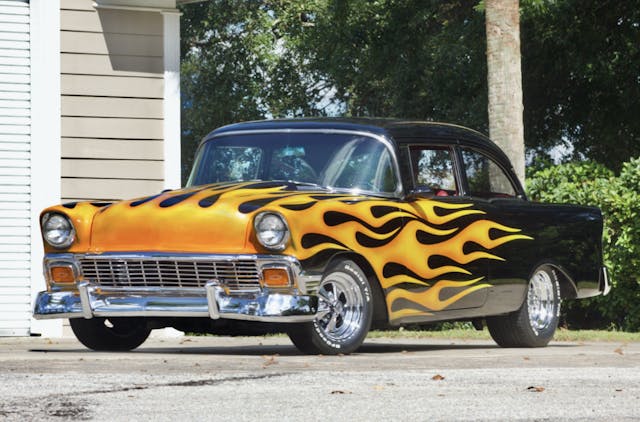
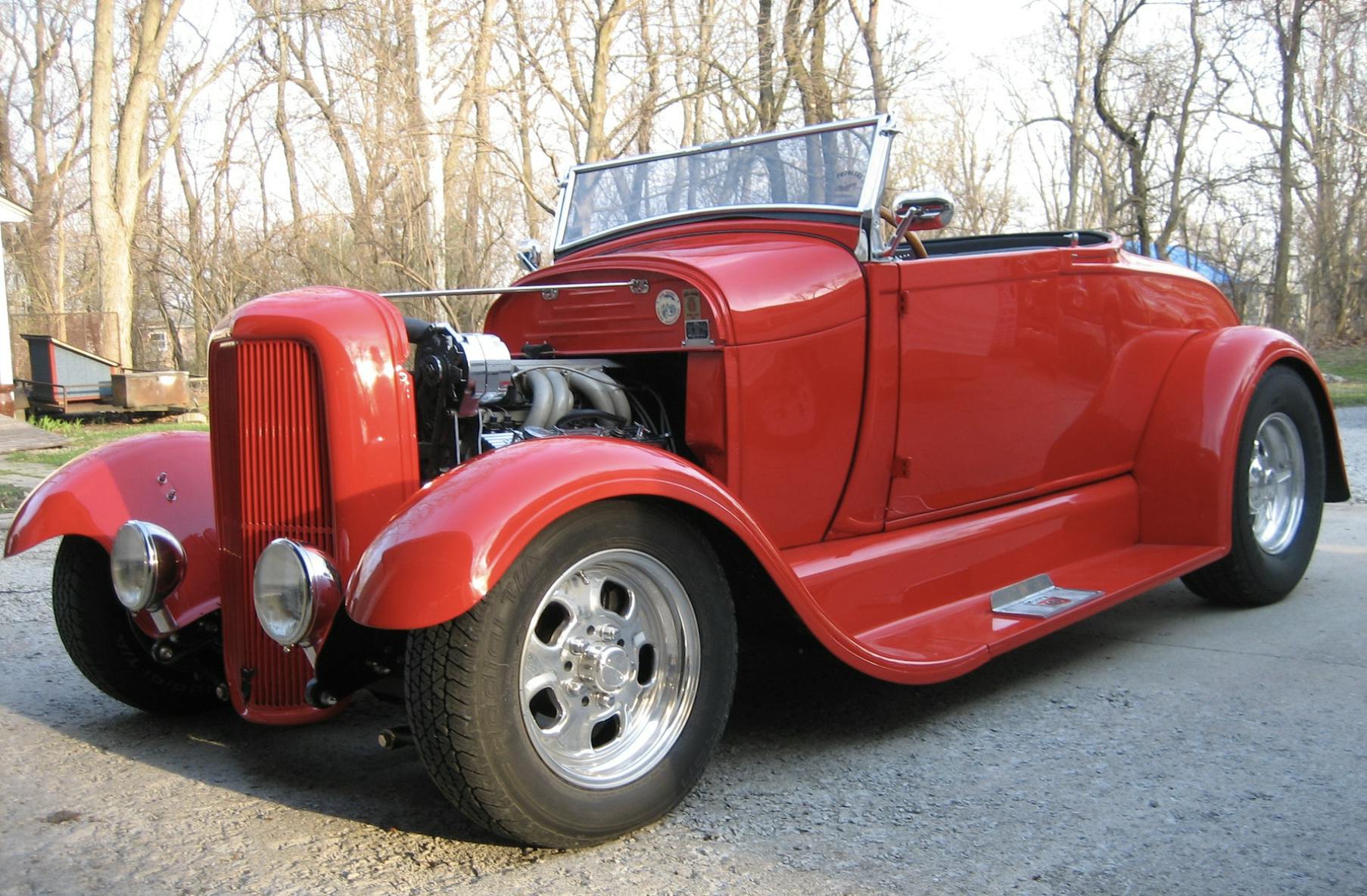


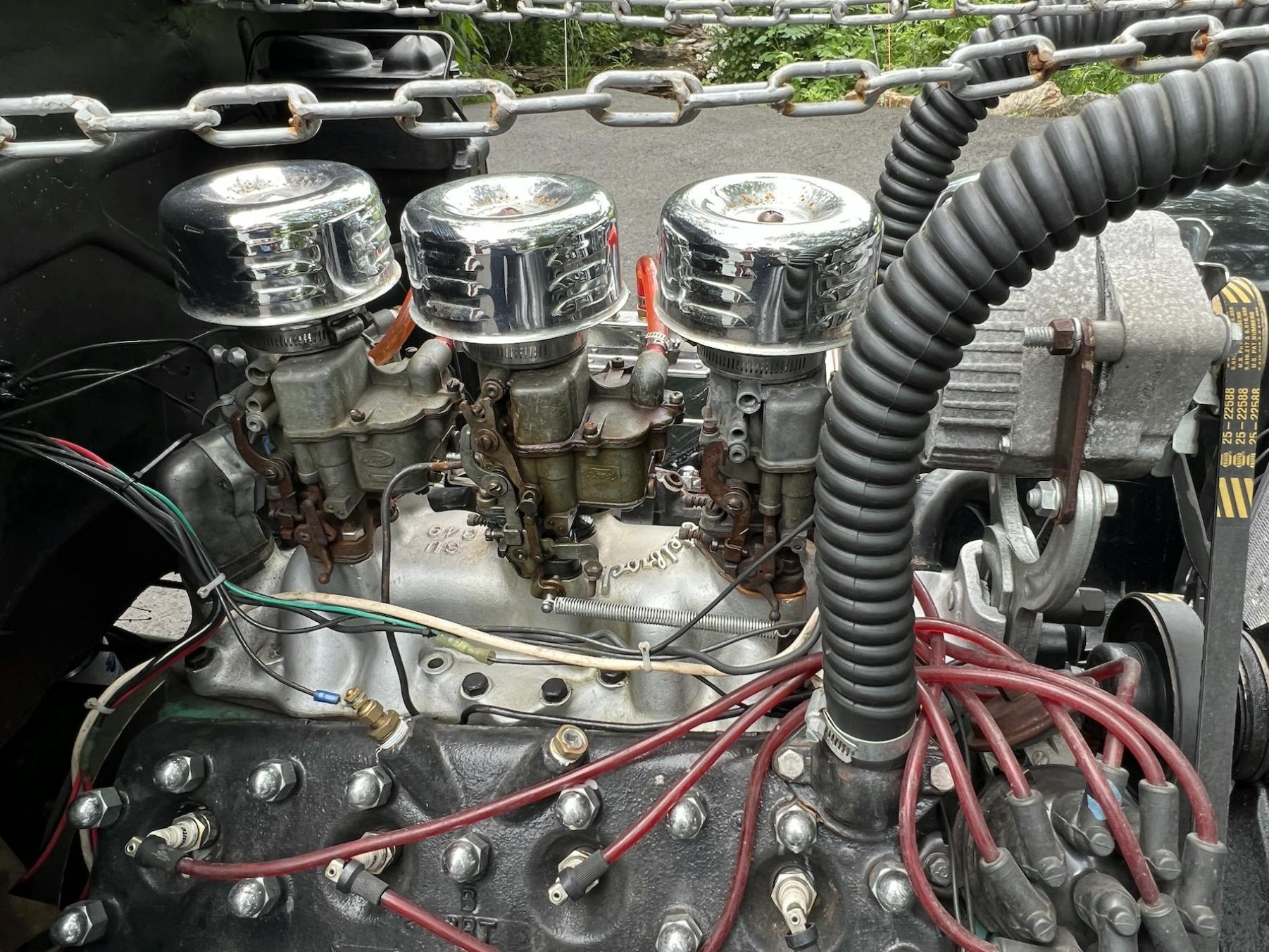
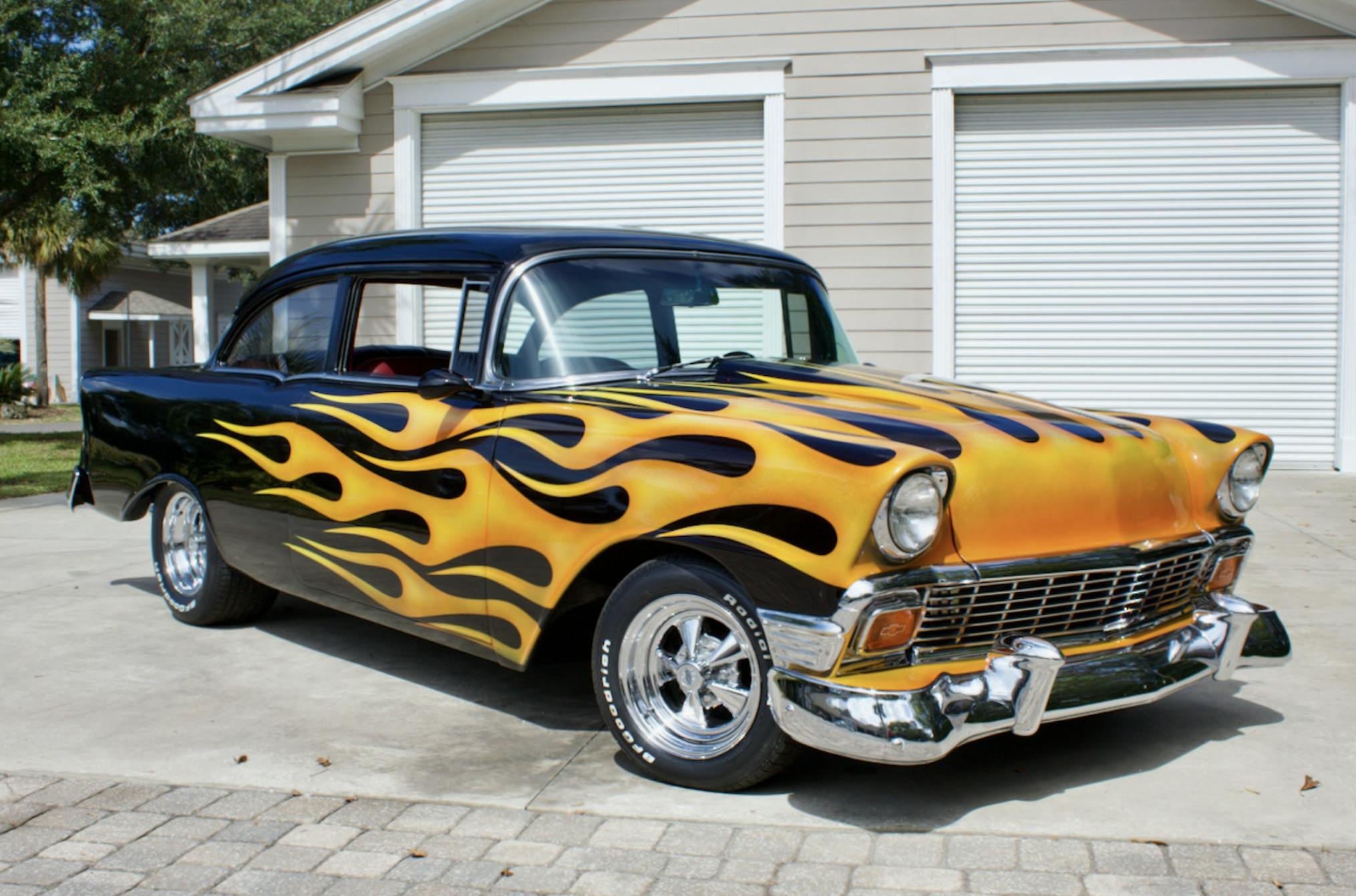
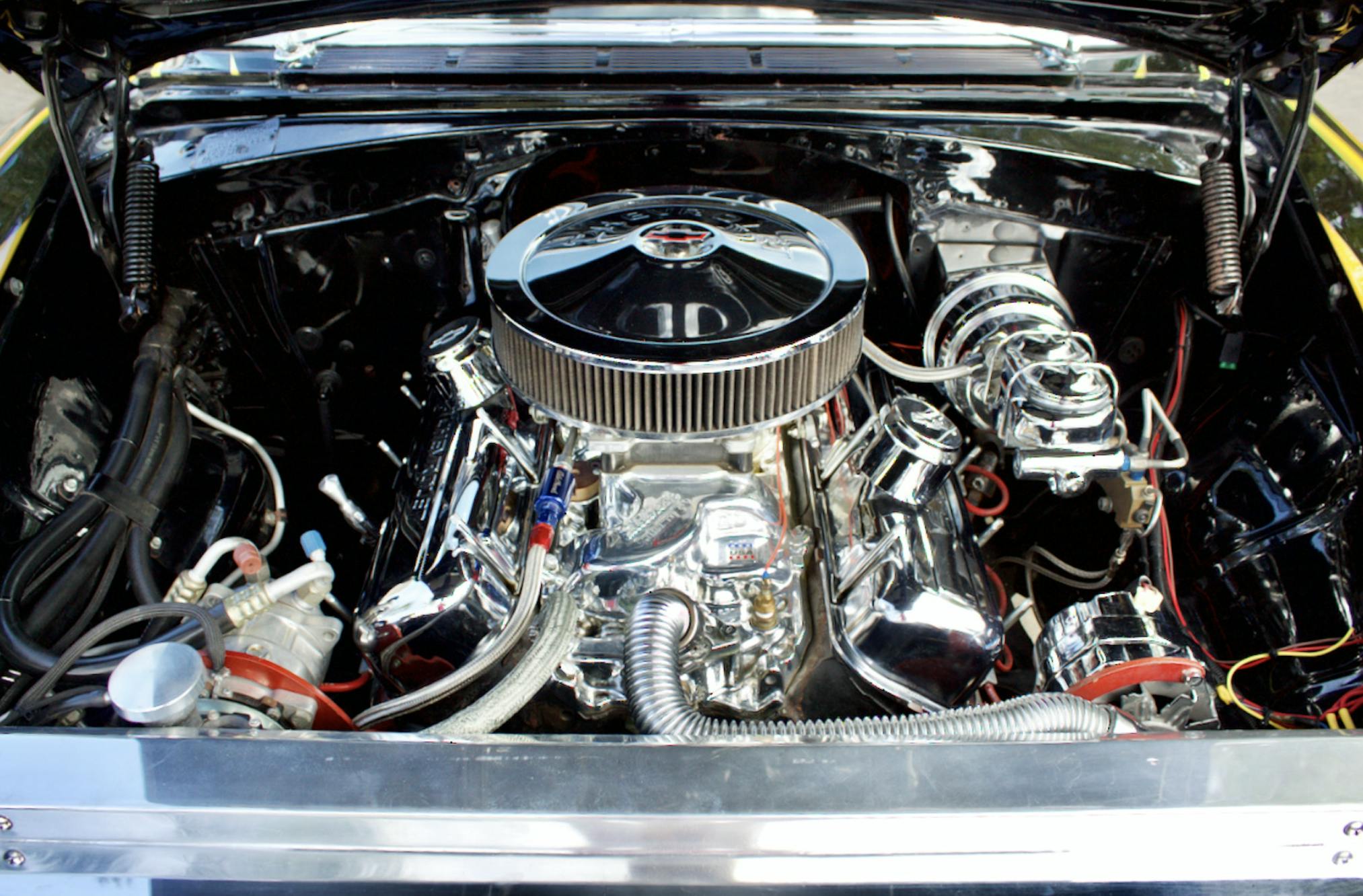
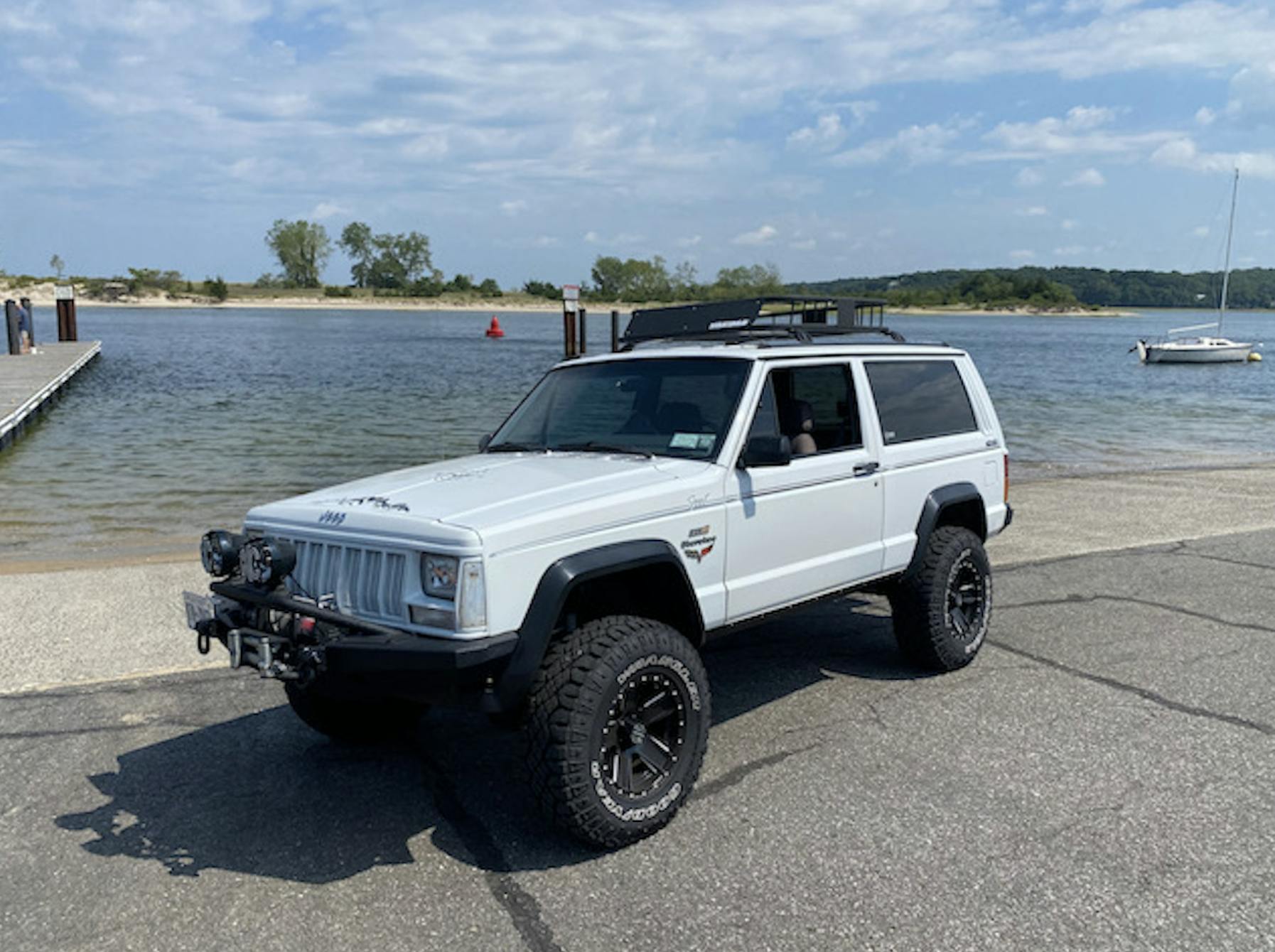



If any of these had the paint job on the ’56, I’d take ’em! And if the ’56 was a hardtop, I’d be selling something to buy it. There’s a reason it’s the most expensive of the bunch… 😏
I had a friend who had a hardtop. It leaked wind and rain. My step dad had a post model. The post model seems to be more prevalent at shows.
I’ve always had a liking for the sedans, post cars. I’ve owned a few over the years. From 2dr wagon (210) to 4drs and 2drs all of them having posts. Just a more taller look to me.
Let us know when this is a list of four-figure cars…
Get a C3 corvette, 1974 to 1977, easily had for under $9K, or a 4th gen Camaro Z/28 with the LT1 engine.
SCRAP cars are four figure cars these days.
My Dad had a ’56 Bel Air hardtop back around ’62 with baby spots, a 283 4 barrel, a three speed on the tree with Corvette gears and a truck clutch. According to him, he was out on Woodward every weekend and never lost a race. His best race was against a FI ’57 Chevy. They stared at Square Lake Road and raced north on Woodward. Dad barely beat the guy and said the guy was dumbfounded. My Dad worked at a gas station in Drayton Plains that had the best tuner/mechanic around and the guy loved my Dad’s car. He was always tweaking it to make it better.
I had several tri-fives in the ’60s and ’70s – they were pretty darned affordable back then, unlike now. My favorite was a ’56 Bel Air hardtop with 283 4-bbl. and Muncie 4-speed, with 4:56 posi and 2×4 box tube traction bars. After a temper tantrum where I kicked in the front fenders and hood, I bolted on the front clip from a ’55 4-door parts car I had, and thus I created what I called my “Fifty-Five-and-a-Half” Chevy. I absolutely loved that car (it was semi quick, but there were also much faster cars around) and it served me well for quite a few adventures. (in case you are wondering, I got over my tantrum stage and never again “danced on the hood” of my vintage autos 🙄)
I’ve long claimed that the 1956 Chevy rear view, with those small bullet taillights, was the most attractive of the tri-fives. Even to this day, at a tri-five meet, I gravitate to those ’56 Bel Airs and a 2-door hardtop or Nomad will capture my attention more than any ’55 or ’57. And since I’m a BIG fan of old school yellow-into-red flames, AND Crager SS wheels, the car in this article (even if it’s a post) is big-time attractive to me. The price, though, is an insult to my sensibilities, since I used to buy and sell tri-fives for THREE figures back in the day!
I’d also add the Nova to this list. At least, some Nova’s. The Nova’s that aren’t worth any more restored than hot rodded. Our’s is a ’63 Nova SS that was an old SoCal drag car that had the driveline replaced many years ago. I didn’t have to worry about anyone telling me I should have restored the car. Fortunately, most of the exterior trim was there and nice enough, and the body was solid. There are also lots of aftermarket parts available to make it run and drive like a new car.
Hard to choose, but I think I prefer the Model A.
I liked the 27. Good price. Different enough to be desirable, not so different to be out of touch. With today’s gas prices, you can cruise with a clean conscience.
I have a 68 Camaro that is in the restoration shop and my money is going in it. If any of these cars shown ended in my garage I would sell them to off set the cost of my Camaro. The only other car that is on my want list is a 66 or 67 Chevelle SS, but all shown are nice cars for someone else. Blessings Larry Thompson
When I think of a classic hot rod, I envision a flame paint job, so the Chevy gets the win of these listed here. A ’37 Ford coupe would be a great starting point for a hot,rod.
A SBC in a reproductive A body (glass?) Is why most rods have the reputation they do among a lot of serious car guys.
A pastiche on top of a cliche.
Hay, guys, switch off NASCAR for a moment and rememberEd made V-8s too.
There is a local guy with an A with a Volvo 240 motor. At least he shows some inventiveness and the “make do with what you have” true spirit of rods rather using a book and credit card to build a car.
Brookville is an all steel reproduction body. In theory you can use their parts as a direct replacement for parts on an original car. Original bodies vary quite a bit so they usually need to adjustments to fit. Finding a complete original 90 year old A body in good shape is rather hard now unless you are going to tear apart a restored original A or spend a lot of time fixing the body.
Well all pretty nice except for the Chevy powered Ford. There is a special place in Hell for people that do that. Keep it original or in the same family or go find a new hobby.
You get more HP for half the price…Not to mention the reliability of a SBC. There is a reason.
An interesting list of cars. Not sure on the affordable part for most.
I would take the ’27 understanding that it is mildly powered. But an engine swap could be made if desired.
The 56 would certainly be my choice. Love the flames. I’d ditch the Cragar wheels and replace with Torq Thrust style without the raised letter tires. Under the hood F.I. would be a must. In the interior I’d trash the cheesy looking center console and put in either Classic Instrument or Dakota Digital gauges.
More junk rods, Frankencars for those without the education to appreciate cars of the ’30s, ’40s with their original drivetrains correctly overhauled, perhaps optional overdrive and/or taller rear axle ratios, radials tires.
Certainly no harder, usually easier, to work on than another SBC 350, Turbo HydraMatic golf cart with fakey- do old body in circus wagon colors with dorky flames and the other effluvia.
We get it. Some old steel rods have their fans. But when everything built before the war, or before 1950, is “retro rodded,” you’re dealing with a dim audience lacking the background to appreciate charm. And the nonsense about not being able to afford the real thing is comical coming from bozos who in the next breath bore you with how much they’ve sunk in a “numbers matching” power steering, power brake, power window, automatic transmission “muscle car.”
Leave the above crapola to the Mickey Mouse Club’s Spin and Marty. You can buy an Auburn 12 with a Columbia two-speed axle, prewar Buick Century or Roadmaster, 1939-on Packard 8 or Super-8 with overdrive, 1936-37 Cord, various Hudsons, among m a n y others able to get you a serious speeding ticket for no more and often less than the above monstrosities, assuming you were ever weaned from kiddie kars.
Don’t Rod and Custom and other down-home rags cover the above?
Boring… Make my hotrod a Morgan +8 with an LS3/6 speed replacing the Rover V8. If you need explanation, you are a prime customer for that shoebox Chevy.
The problem with hot rods is that they are as common as production cars, which is where they all started out. Pre 40 Fords, Shoebox/Tri5 Chevys, and bucket T roadsters (with a V6?, Really?). These cars are supposed to be the expressions of their owners, yet, there is an agonizing sameness. Sure, I have seen stuff that I like, but after driving one, and running into the same “creation” at the next show (small block, Factory 5 or Just A Hobby rails, Wescott body…), it’s like a bunch of Revelle kits come to life. Everyone creates essentially the same thing. I understand the love of these machines, but… Well… Not for me.
Right. Many of us “get” rods, old “kustoms” from the day, a few of the novel ones, admire their craftsmanship if not taste. To each his own. But as you outline, hardly anything distinctive in those pictured above or among those you list. Just more “me-too” dreck for guys without the education, exposure to 120 years of automobilia, many of which treasures can be driven on the open road at a good clip.
Let’s face it. Much of the attraction of the above dumb rods is their automatic transmission, the better to cope with a nation collapsing from overpopulation, 350 million, the latest census under-reported by 15-20 million according to the NY Times, Wash Post, TIME, US News & World Report. But dealing with what every poll of scientists shows in agreement, the dire need to curb overpopulation, is an adult issue, demanding more than EZ look-at-me escapism Wheels R Us.
Here’s the crux: Most of us fans of vintage sports, road, grand touring cars have experience with rods, customs, everything. But few among the rod & kustom krowd know anything about Auburns, Cords, prewar Buicks, overdrive Packards, Pierces, Chryslers, Hudsons, Railtons and a hundred others.
But if Branson and Dollywood cultural paradise…
Honest question:. How does that 27 get titled and registered as a 1927 model T? There is NOTHING model T on that car.
Good question. In some instances, a car’s engine number was used for registration. A car’s heart and soul is its e n g i n e, so when you wind up with a pastiche of varying parts, unsure what you’re driving. In the above case, it should be titled as a 1973-76 or whatever Mercury Capri.